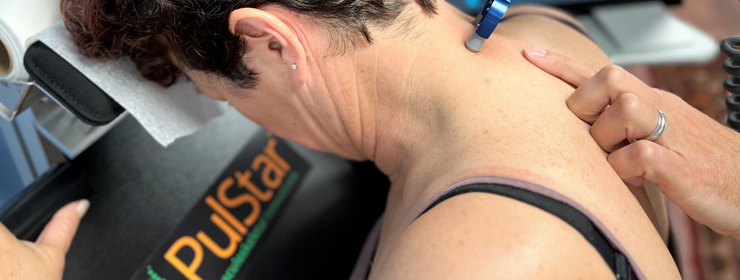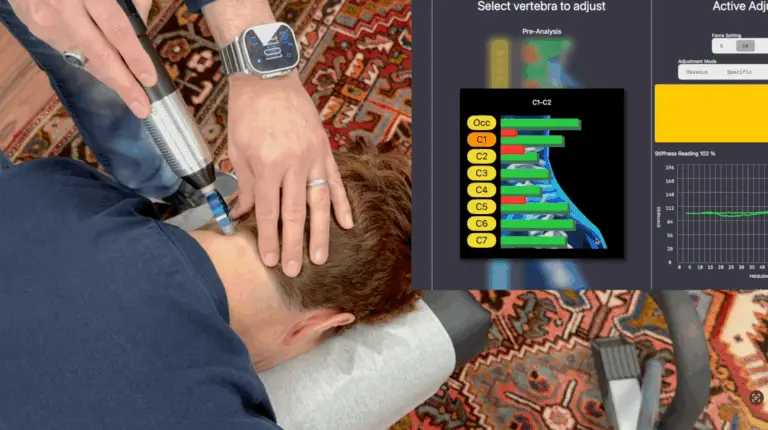The constant research and innovation that propels modern medicine forward have revolutionized how doctors are able to treat their patients and lead them toward better outcomes. Like many other practitioners, chiropractors have benefited from advances in technology that have facilitated enhanced treatment methods. Most notably, computerized adjusting has made waves in the chiropractic world, contributing to the effectiveness and popularity of instrument adjusting.
These new techniques do not mean that traditional manual adjusting is obsolete. Both methods offer unique advantages and can be used to aid patients on their path to a healthier future. For chiropractors and patients seeking the best blend of treatments to facilitate healing, incorporating both types of adjustment is ideal. Read on for a comparison of manual adjusting versus computerized adjusting, as well as the pros and cons of each.
The Pros and Cons of Manual Chiropractic Adjusting
As the original and most common form of chiropractic adjustment, manual adjusting has an established place in practically every practice. There are a number of reasons this approach has remained a staple for so long, and it is still an invaluable skill for every doctor of chiropractic to master. While it is not without drawbacks such as increased risk of repetitive strain injury (RSI), manual adjusting is here to stay.
Where Manual Adjusting Excels
Its commonality is a pro in itself. Doctors and patients alike are familiar with manual adjusting, and its widespread acceptance makes it recognizable and approachable. There is also a clear advantage of working directly with your hands. Chiropractors that hone their manual adjusting skills are able to accurately diagnose and treat misalignments and other issues by touch. They learn to read their patients’ bodies—an invaluable skill that cannot be duplicated by a computer.
Because manual adjustment relies solely on the doctor’s body and abilities, treatment can be performed even when technology breaks, power is unavailable, and so on. This alone makes manual adjusting a timeless art.
The Cons of Manual Adjusting
While a chiropractor’s hands are unbelievably skilled both in detecting and treating musculoskeletal problems, they do have shortcomings. Over time, the force necessary to provide adjustments can wear on a doctor of chiropractic’s body, potentially limiting their effectiveness and shortening their career. Further, it can actually be intimidating to patients, especially those who do not like the obvious use of force and occasional loud popping or cracking sounds. Manual adjusting also takes more time than instrument adjusting.
Computerized Chiropractic Adjusting – Where it Shines and Falls Short
Thanks to relatively recent technological innovations, the field of chiropractic has advanced huge strides in the last few decades. With visualized instrument adjusting and computerized adjusting via products like the PulStar, chiropractors have more options when treating their patients. At the same time, patients have more opportunities to choose and receive treatment that works for them.
The Pros of Computerized Adjusting
Instrument adjusting provides advantages to both doctors and patients. One of the most notable benefits is the ability to deliver precise amounts of force with incredible accuracy. Where hands can only be so accurate due to their size and ability to exert force, instruments can deliver impulses with pinpoint exactness. This is invaluable for treating specific areas, joints, and other challenging regions of concern. Visualized instrument adjusting takes this a step further by providing the doctor and patient with an internal look at the musculoskeletal system in question.
Instrument adjusting also enables the chiropractor to adjust a joint throughout its entire range of motion and easily adjust the patient in their position of pain whether sitting, standing or prone, adding valuable methods that may be difficult to achieve with manual adjusting alone.
Computerized adjusting also reduces the time a patient needs to be in a session in order to receive the same benefit as manual adjusting. This means a doctor can help more patients a day, grow their practice without sacrificing quality, and offer patients unparalleled convenience.
The wear and tear of manual adjusting on a doctor’s body are greatly reduced when using instrument adjusting. This protects from injury, limits fatigue, and can extend a career significantly.
The Cons of Instrument Adjusting
The primary cons associated with instrument adjusting are the price and learning curve. The former is a legitimate concern, but by using certain tax breaks, an increase in new patients looking for technology in their healthcare and looking at the investment long-term, the cost, given the benefits, is easily justified. The learning curve is also easily overcome, especially when utilizing companies like PulStar that provide on-demand training and support to get you up and running smoothly with your new system.
There is no question that computerized chiropractic adjusting offers several advantages over manual adjusting and can be exceptionally valuable in any practice. While the best route forward in the chiropractic field is a mixture of both techniques, instrument adjusting has solidified its place in the present and future of chiropractic.











